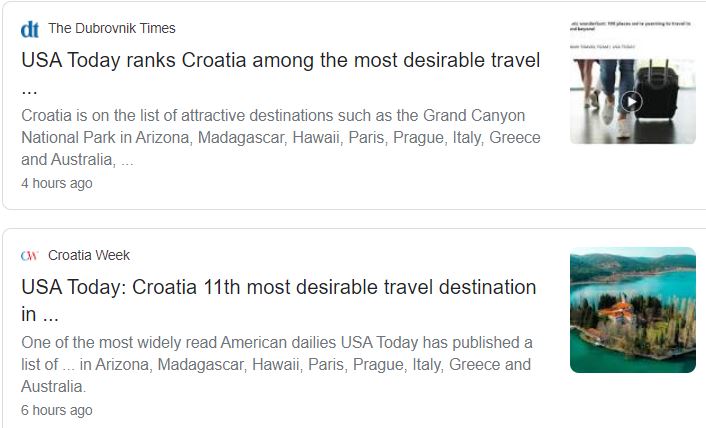Croatian OTP Banka Lowering Interest Rates From February 1st
January the 12th, 2021 - Excellent news for those with accounts with the Croatian OTP banka as interest rates are set to be frozen as of the beginning of next month.
As Poslovni Dnevnik writes, on Monday, the Croatian OTP banka announced that it would lower its interest rates on loans to Croatia’s residents who have accounts in euros and kuna linked to the National Reference Interest Rate (NRS1) from the beginning of February.
From February the 1st, OTP banka will lower interest rates on all loans to those with a variable interest rate, which is related to the movement of the national reference rate (NRS1), so the interest rate on loans with a currency clause in euros will be lower by 0.05 percent points while on loans in kuna will be lower by 0.06 percentage points, the statement said.
As was added, this interest rate reduction refers to all existing and newly approved loans that are related to the National Reference Rate (NRS1).
OTP banka notes that it will inform all its clients in a timely and written manner about the change in the interest rates and the new amount of annuities and the new repayment plan.
The national reference interest rate is the average cost of financing the banking sector and is calculated by the Croatian National Bank (CNB). NRS1 represents the costs of financing from the funds collected from deposits of natural persons, and NRS2 the costs of financing from the funds collected from deposits of natural and legal persons of the non-financial sector.
Back at the end of November, the CNB published the values of the national reference rate (NRS) for the third quarter of 2020, which show the continuation of the downward trend that has been going on since way back at the beginning of 2013. Of the 24 NRS indices calculated by the CNB, in the third quarter of 2020 all these indices showed lower values than they did in the previous quarter, although their decline was slightly smaller than in the previous quarter, with the exception of the Swiss currency index, which remained unchanged.
For the latest travel info, bookmark our main travel info article, which is updated daily.
Read the Croatian Travel Update in your language - now available in 24 languages.
Branko Kolaric: Could Croatia Place Restrictions on Unvaccinated People?
January the 12th, 2021 - Croatian Epidemiologist Branko Kolaric has discussed the vaccination process for healthcare professionals, the elderly and the most vulnerable, and some of the rules other countries might consider bringing in for those who do not vaccinate against the novel coronavirus.
As Poslovni Dnevnik writes, the Croatian Institute of Public Health says that by the end of January and through February, a good part of the elderly, vulnerable and patients with chronic health complaints and other diseases who are in the second group are expected to be vaccinated. This will then be immediately followed by the third phase, so everyone else should be there by the time spring rolls around.
A member of the Government's Scientific Council, epidemiologist Branko Kolaric, said more about this in Dnevnik Nova TV.
As he said, Croatia is currently vaccinating people with a small number of doses. "At this rate, we should be able to vaccinate about fifty percent of the population in two years. Now the limiting factor is the number of doses we have available. We hope to register some more vaccines soon and when we get more doses, then we’ll be able to speed up the pace of vaccination. Now we’re still under one percent of people in Croatia vaccinated, but it is still at the level of the European Union,’’ said Branko Kolaric.
Regarding KOHOM's proposal to vaccinate people in large areas, he says that this is one of the possibilities when there are enough vaccines available in the country.
“Once we have a large number of doses available, this is one of the possibilities so that we can get people vaccinated faster. That will only be when we will have hundreds of thousands of doses of vaccine at our disposal,’’ Branko Kolaric explained.
Germany is now going into a stricter lockdown, and Branko Kolaric hopes that this will not happen to Croatia. "We’re on the descent of the second wave. All countries are now preparing for the third wave, which is associated with the festive period and more indoor socialising. We’ll have to see how it develops in our country. At the moment, the situation is favourable, epidemiologically speaking - we’re seeing the effects of the measures we’ve introduced,’’ said Branko Kolaric.
There have been several cases of coronavirus infection occurring even after vaccination against the disease, but Branko Kolaric explained that such people didn’t contract the disease from the vaccine.
“I’d like to just mention that when someone gets vaccinated and still gets the disease, they didn’t get the disease from the vaccine. That’s impossible, but it does mean that the person was incubating the novel coronavirus at the time of their vaccination. The vaccine teaches our body how to fight the virus and that takes some time, the first effects should take about ten days to two weeks. It’s therefore still possible to contract the virus during that first week. People who received the first dose and became ill, receive the second dose on a schedule if their isolation is over. If not, then they get it after the end of their isolation,’’ explained Branko Kolaric.
“We’re now thinking about how we can get our hands on enough doses of the vaccine. We have a great interest, people who would readily get vaccinated are calling us,’’ he added.
Restrictions for those who are not vaccinated...
But the question arises - will there be restrictions for those who don’t get vaccinated?
“Will there be any restrictions? In my opinion, yes, I think that’s possible. Some countries and companies will introduce that. Travel companies, airlines and the like said they would ask for their passengers to be vaccinated,’’ Branko Kolaric said.
When it comes to the anti-epidemic measures, he says it is difficult to say how long they’ll need to stay in place. "We’re monitoring the number of cases and the share of positives on a daily basis. This is going to remain as it is until January the 31st and after that we’ll see what the situation will be like,’’ he said, adding that he is optimistic about Croatia’s tourist season this year despite all.
For the latest travel info, bookmark our main travel info article, which is updated daily.
Read the Croatian Travel Update in your language - now available in 24 languages.
Professor Markotic: Croatian Healthcare System Suffering Less Pressure
January the 12th, 2021 - The Croatian healthcare system is underfunded and on the brink of some sort of crisis at the best of times, but the coronavirus pandemic has thrown it from the frying pan into the fire. The pressure on the system has been enormous, but Professor Markotic has stated that it is now significantly less than it was.
As Poslovni Dnevnik writes, the director of Zagreb’s “Dr Fran Mihaljevic” Clinic for Infectious Diseases, Professor Markotic, has pointed out that there has been significantly less pressure on the enfeebled Croatian healthcare system over the last week, which is very encouraging indeed. She appealed for continued adherence to the current measures in order to maintain this positive trend.
"It’s very encouraging that in other centres who have coronavirus patients there has been a drop in the number of patients in general, and a drop in those needing to be on respirators, so we expect a drop in mortality, too. The good news is that as early as Friday, the University of Texas Galveston showed that the Pfizer vaccine works on new mutated strains of the virus too, and the other good news came from Moderna and their research.
After four months following infection by the SARS-CoV-2 virus, the antibodies built up as an immune response in a person’s blood are still at a high level. Here in Croatia, information among people who have recovered from the infection speaks of around eight months of immunity.
Returning to vaccines, such research is expected to be relevant in regard to both vaccines. According to AstraZeneca, immunity should be maintained for up to a year, maybe for even longer after having received their vaccine. We’re remaining patient while it’s winter and the weather is cold, so that we can return to a more normal life in the spring and summer,’’ concluded Professor Markotic, who has become a household name since the pandemic broke through Croatia’s first line of defense back in the spring of 2020.
For the latest travel info, bookmark our main travel info article, which is updated daily.
Read the Croatian Travel Update in your language - now available in 24 languages.
Varazdin Old Town Nominated For Croatia's Second European Heritage Label
January 11, 2021 – Comparable to UNESCO's World Heritage List, the European Heritage Label is given to sites that have played a significant in the history, culture and values of Europe. If successful, Varazdin Old Town will be only the second site in Croatia to receive the classification
They say that Northern Croatia has more castles, fortresses and stately homes than any other region in the country. And they are probably right. Not that the names and locations of all are widely known either in the country, and certainly not outside. Truth be told, some of the structures included on Northern Croatia's list of important buildings have lain derelict for centuries. In others, the decline has been more recent. The best way to preserve such buildings seems to come from reimagining them for contemporary use, rather than simply preserving them in aspic or amber.
That is something that Varazdin Old Town does extremely well. All of Northern Croatia's famous castles do this well - Čakovec castle, Trakošćan, Veliki Tabor and Gornja Stubica. It's the reason they are famous. By opening up their doors as museums and event spaces, they attract hundreds of thousands of visitors each year and they get to tell their stories. And the story of Varazdin Old Town makes it perfect for the European Heritage Label.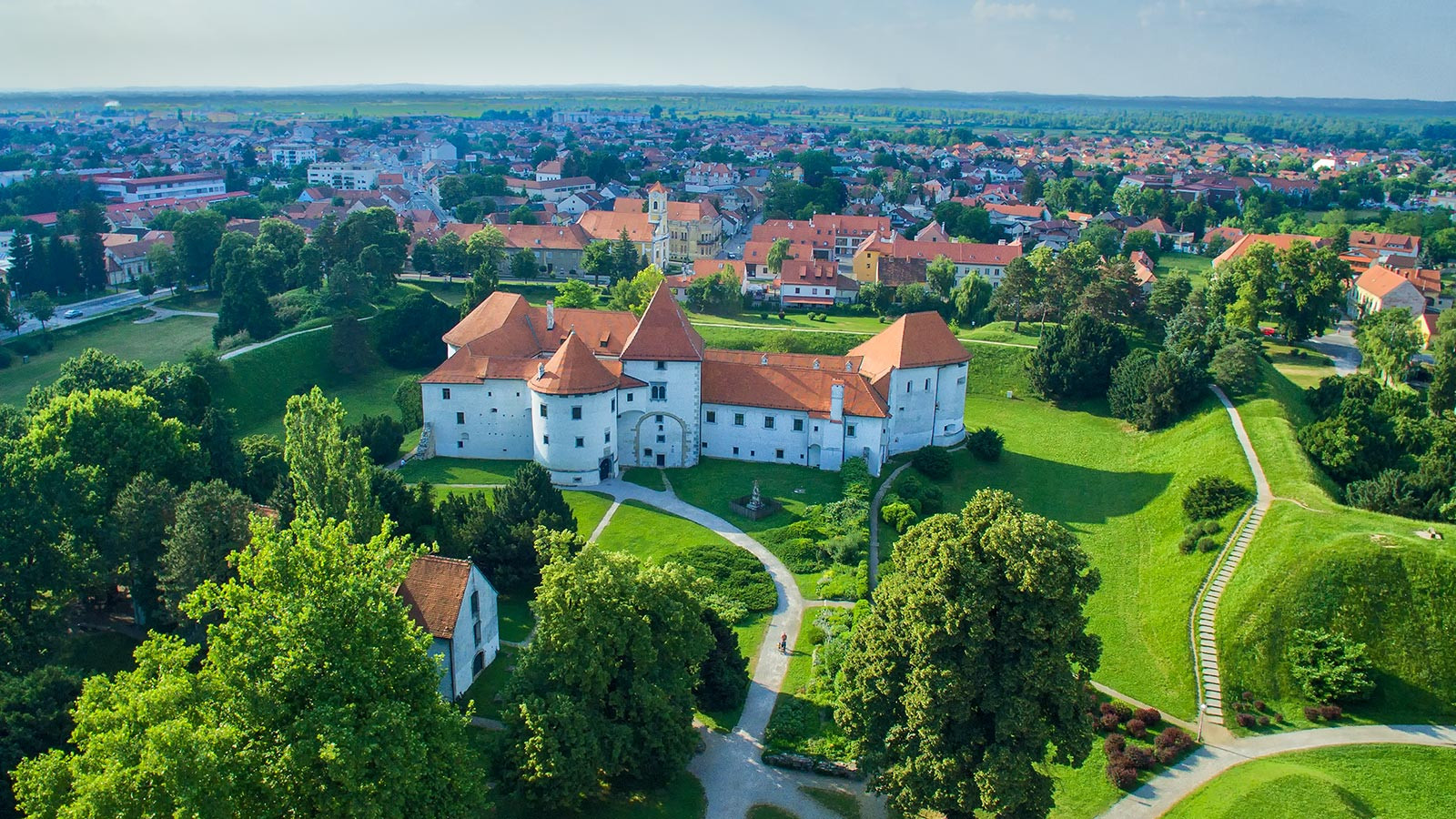 © Ivo Biočina / Croatia National Tourist Board
© Ivo Biočina / Croatia National Tourist Board
Varazdin Old Town is today inhabited by the Varaždin City Museum. They give guided tours around the fortress that was once the full extent of Varazdin Old Town. This city museum is the best way to learn about Varazdin's extraordinary buildings, culture and history. The museum has undertaken this role, and that of preserving items from Varazdin's past, since 1925. It has four permanent exhibitions and six major departments – Archaeology, History, Cultural History, Ethnographical, Entomology and the Gallery of Old and Contemporary Masters, some of which are inside the Old Town fortress itself.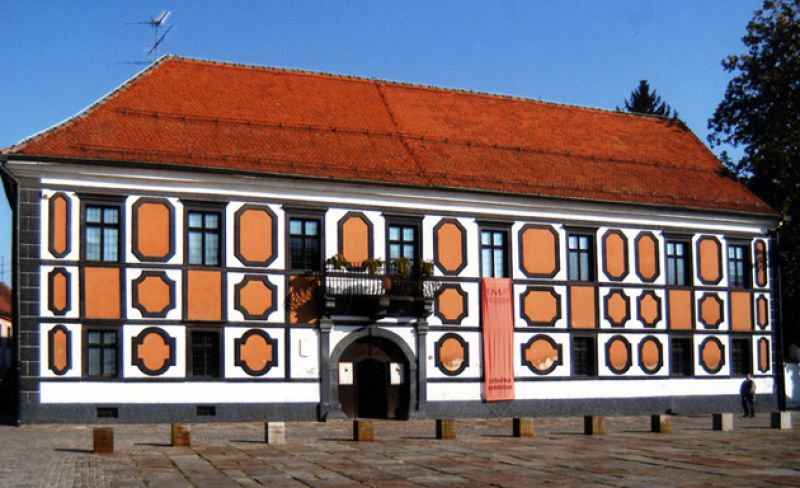 The Gallery of Old and New Masters of Varaždin City Museum © City of Varazdin Tourist Board
The Gallery of Old and New Masters of Varaždin City Museum © City of Varazdin Tourist Board
The Old Town fortress itself is medieval in origin, its construction having begun in the 14th century. Its Gothic towers were added a century later and the collection of buildings was remodelled and added to right up to the 19th century, in response to its inhabitants and its purpose.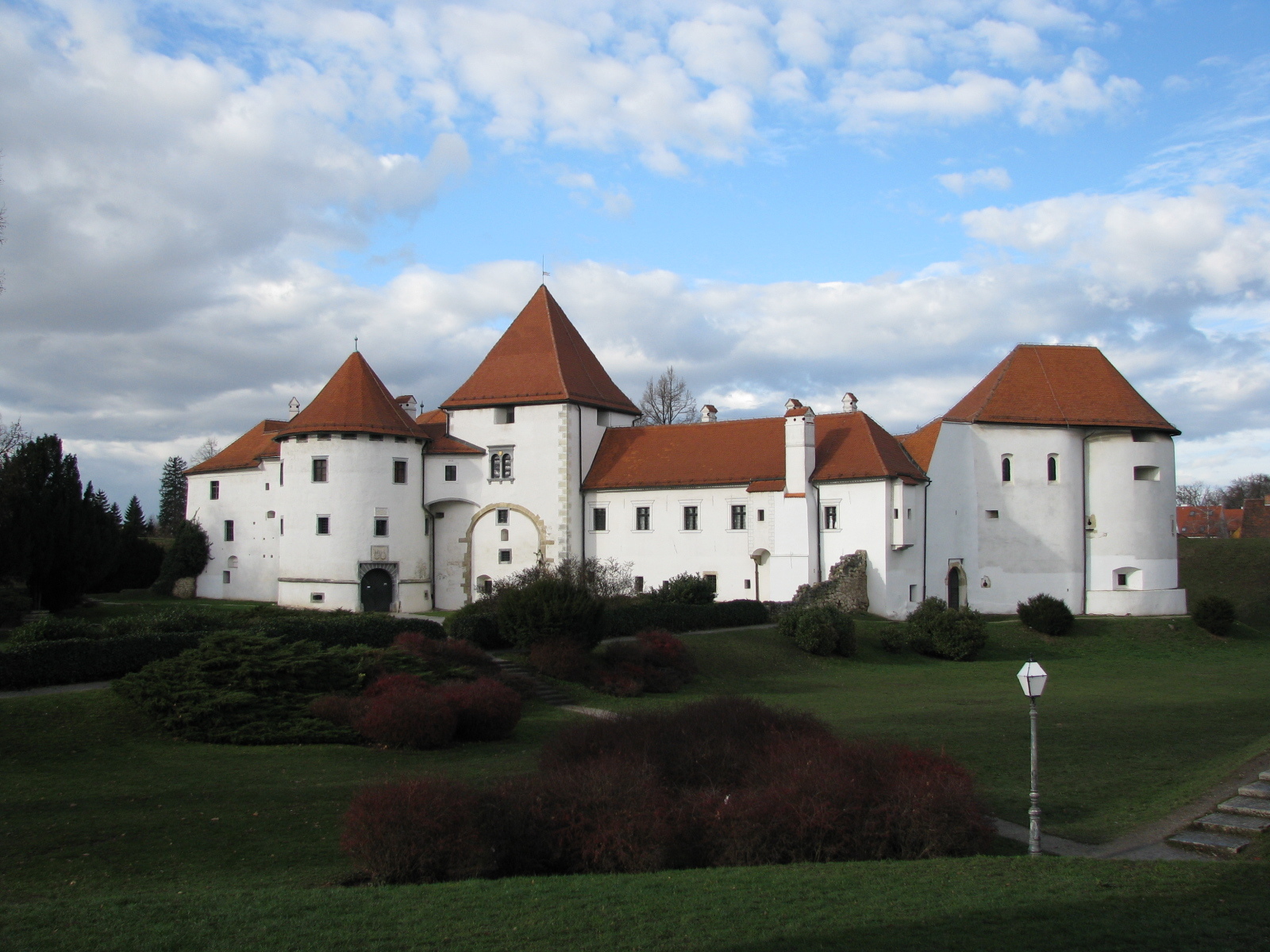 © Ex13
© Ex13
For defence against the Ottomans in the 16th century, it was reconstructed as a Renaissance fortress – high earthen walls with bastions were added, and a double moat. During the past, many noble families have lived here - the Counts of Celje, John Ungnada, George of Brandenburg and Croatian Ban Thomas Erdödyja and his successors. Indeed, Varazdin was once the capital city of Croatia, ruled from these very buildings. In its changing use, architecture and occupancy lies the story of not only the development of Croatia but that too of Europe and it is this that makes Varazdin Old Town eligible for the European Heritage Label.
The European Heritage Label is awarded to sites that bring to life the European narrative and the history behind it. The European Heritage label is currently awarded only every two years. So far, the only site in Croatia to receive the European Cultural Heritage Label from the European Commission is the Neanderthal Museum in Krapina. Its label was awarded in 2015.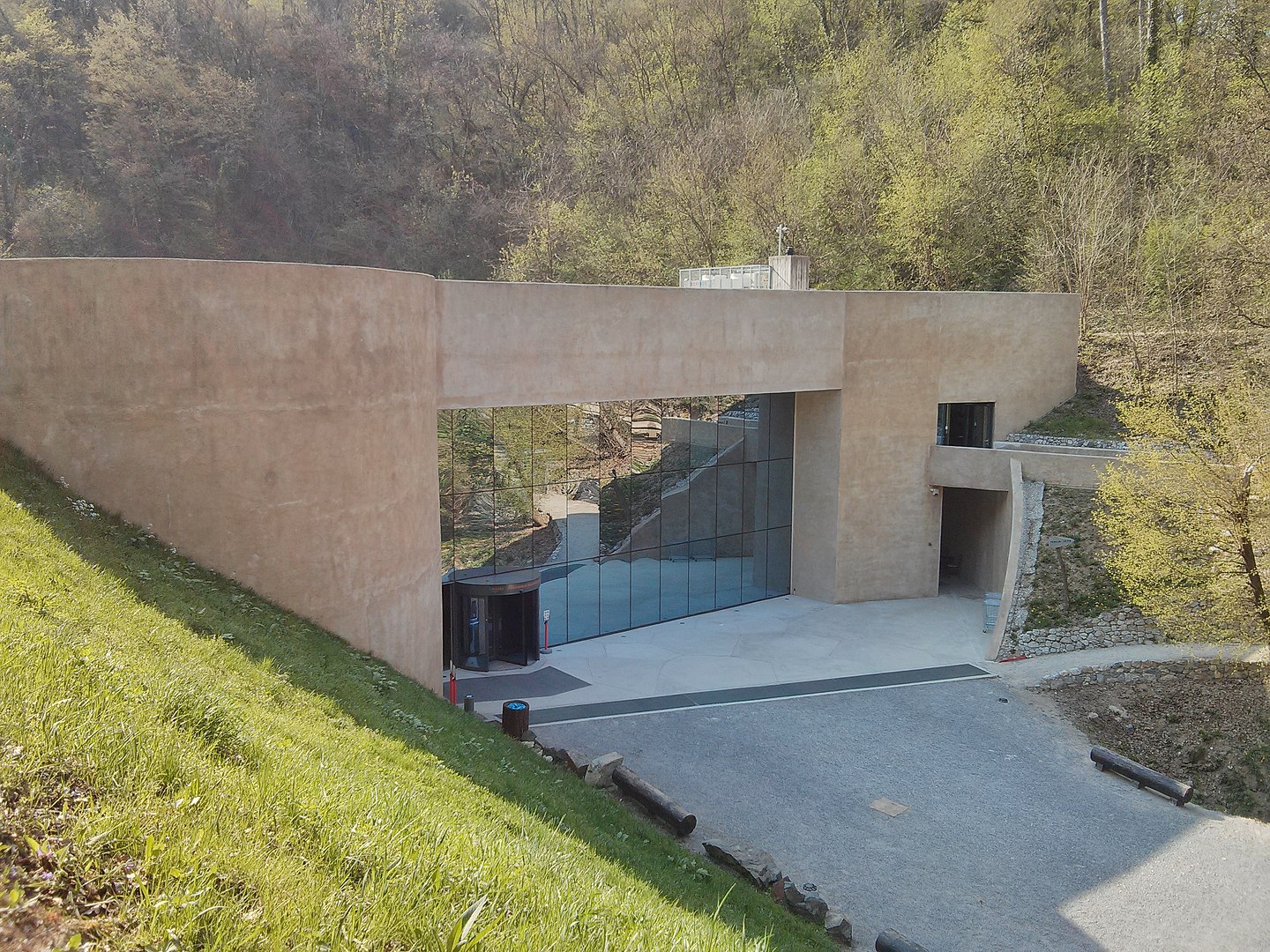 The Neanderthal Museum in Krapina, also in Northern Croatia. It received its European Heritage Label in 2015 © Zeljko Filipin
The Neanderthal Museum in Krapina, also in Northern Croatia. It received its European Heritage Label in 2015 © Zeljko Filipin
Croatia Thanks Countries for Help to Cope With Aftermath of Quake
ZAGREB, 11 January, 2021 - The Foreign and European Affairs Ministry on Monday thanked the countries that have helped Croatia since the 29 December magnitude 6.2 earthquake, adding that that disaster has once again confirmed the benefits of Croatia's membership of the European Union.
The ministry said that since the end of December last year when central Croatia was struck by a series of strong earthquakes, it has been informing foreign countries and international organisations of their destructive effects.
"The Ministry of Foreign and European Affairs, along with the entire diplomatic and consular network, has been informing foreign and international organizations about the aftermath of a series of earthquakes that hit central Croatia end-December 2020," reads the press release issued on the ministry's website on Monday.
The ministry continues to coordinate aid collection through its international contacts and would once again like to thank everyone for their assistance and compassion. "Croatia will not forget this," it underscores.
The ministry underscored that this "unforeseeable situation once again confirmed the benefits of membership to the European Union," which was evident in the first 24 hours through the Union's Civil Protection Mechanism when urgent aid arrived from member states.
To date aid has arrived from Austria, Bulgaria, Czech Republic, Finland, France, Germany, Greece, Hungary, Italy, Lithuania, Portugal, Romania, Slovakia and Slovenia, the press release notes, adding that aid was sent by land, sea and air.
The ministry underlined that financial and humanitarian aid arrived shortly after the quake from Southeast European countries too - Albania, Bosnia and Herzegovina, Montenegro, North Macedonia, Serbia and Turkey.
The press release notes that countries from around the world have helped Croatia including Canada, China, Ukraine, South Korea and the USA.
"Numerous other countries have also offered assistance in terms of equipment or experts, which Croatia is not in the position to accept at the moment, but wishes to express gratitude nonetheless," the press release said.
"We are especially grateful to Croatian expatriates all over the world, who have demonstrated exceptional selflessness and, like many times before, through their associations, Catholic missions and parishes, shown willingness to help the Homeland in these difficult times. This once again underscored the unbreakable ties between Croatia and its diaspora," the press release said.
The ministry also thanked international organisations like UNICEF and UNHCR and numerous other international partners, foreign investors, companies and civil-society organisations as well as individual "who showed their solidarity with their generous contributions."
HZZ: Nearly 160,000 Jobless People in Croatia at End of December
ZAGREB, 11 January, 2021 - There were 159,845 jobless people registered with the Croatian Employment Service (HZZ) at the end of December, or 28,092, that is 21.3%, more than in December 2019, HZZ data shows.
Unemployment increased on the month too with 3,295 more people out of work or 2.1% compared to November 2020.
Daily data indicates that unemployment is continuing to increase in January 2021 too and currently there are 161,768 people registered as unemployed which is 1,923 more than at the end of December.
HZZ currently has 5,459 vacancies advertised.
Unemployment continued to increase by more than 20% on the year in December but it slowed down to 21.3% compared to 21.9% registered in November y-o-y.
22.1% of jobless persons receive unemployment benefits in December
According to HZZ data in December 2020, there were 35,388 people on the dole, or 22.1% of all those unemployed, or 59 more people (0.2%) y-o-y.
HZZ continued implementing job-retention measures in December for those businesses affected by the COVID pandemic however, eligibility criteria was changed. The number of workers who received job-retention grants in December amounted to 96,179 persons hired by 25,493 employers, HZZ reported.
Croatia Beats Mars, Any Airport in World in Top 100 Destinations for 2021
January 11, 2021 - As the Croatian National Tourist Board delights in its inclusion in yet another meaningless list, a look at the competition illustrates the point, as Croatia tops Mars and 'any airport in the world.'
One of the things I have learned writing online is that the title is everything. A sad - and rather dispiriting - truth I have learned blogging for the last decade is that less and less people read these days. It is often the case that an article has more Facebook likes than actual views, more comments based on the title in the social media share than the considered reflections of a commentator who has actually read the article.
Such is the world in which we live in 2021.
Over the last few years. I have noticed the Croatian National Tourist Board use this reality to great effect. In the absence of any obvious tangible strategy (at least to me), shouting from the rooftops in some inane list in international media has been a key part of the 'promotion' which supposedly justifies the investment that is 70-80 permanent jobs at head office and an annual budget in the region of 40 million euro.
Today provided the latest perfect example of this, as the national tourist board's PR department purred at Croatia's inclusion in yet another 'meaningful' list, this time USA Today's article, Greece, Japan, More: 100 Places We Hope to Travel in 2021. No mention of Croatia in the title, which headlines with one of Croatia's strongest competitors, but we will let that one slide for now.
"One of the most widely read American dailies USA Today published a list of the 100 most desirable travel destinations in 2021, and Croatia ranked 11th," said the official press release. The title of the press release was even more appealing - USA TODAY RANKED CROATIA AMONG THE MOST DESIRABLE TRAVEL DESTINATIONS IN 2021.
Incredible stuff. Amazing work, Team National Tourist Board. Eleventh in the world is quite an achievement, accompanied by the detailed explanation of why Croatia was number 11:
11. Croatia: It’s been on my list for a while, and the wanderlust is real. Will be ticking off as many spots as possible in 2021. – Hines
Croatia: You've seen these spots on 'Game of Thrones'; now see them for yourself
Incredible stuff, and if I didn't live in Croatia already, I am sure I would be packing a suitcase.
I was curious to see which 10 destinations managed to beat Croatia in this exclusive list, and it was then that I realised that it would be tough for Croatia to break into the top 10, despite the incredible promotional efforts of the Croatian National Tourist Board.
4. As far as my saved-up Delta miles will take me
How could the beauty of Croatia possibly compete with that?
5. Anywhere my mom wants to go
Maybe Mom would like to go to Croatia.
9. A COVID-19-free cruise
A little bit like the two above, anywhere will do.
But this is a great promotion of Croatia, worthy of a press release, and shared among the Croatian media.
Unlike in Greece, which made this list not once, but twice.
Or France, which made the list four times, with Paris featured twice, including above Croatia - nestled between As far as my saved-up Delta miles will take me, Anywhere my mom wants to go, and a COVID-19-free cruise.
It should be acknowledged that Croatia did beat off some very serious competition to make it to number 11 in the latest pointless list the Internet. These include:
58. Any airport in the world: I look forward to arriving early for a flight, getting coffee and an I-only-eat-this-when-I-travel muffin and watching waves of travelers heading off to great adventures and into the arms of those they love. – Harriet Baskas, USA TODAY travel contributor (Twitter: @hbaskas, Instagram: @hbaskas, StuckatTheAirport.com)
and
100. Mars: Honestly, at this point, why not? After spending most of 2020 quarantined at home on Earth, I’m wanderlusting for anywhere in the galaxy. – Trepany
Even though Croatia is an elite destination, presumably its price competitiveness compared to a holiday on Mars helped edge it above Mars in the final rankings.
Style over substance - the classic strategy of the Kingdom of Accidental Tourism. It is in evidence wherever one looks.
Just before Christmas, for example, national tourist board director Kristjan Stanicic was quoted in the Croatian media, enthusiastically promoting a new tourism idea - something called digital nomad tourism. According to Stanicic:
We plan various activities to position our country as an attractive destination for digital nomads. The focus of marketing campaigns will be on the fact that Croatia can guarantee a safe and quality stay for digital nomads. We will emphasize the excellent transport connections and the geographical position of an EU country in which many speak English and which has an excellent infrastructure and quality of offer. In the promotion, we will focus on the fact that our life is accessible according to European standards, that we have good health care with well-known benefits such as a favorable climate, beautiful nature and rich cultural and historical heritage. At the beginning of 2021, an online campaign is planned in Great Britain, the USA and Australia, and we will soon start teaser activities, ie posts with initial information about the legislative changes on social networks Facebook, Twitter and LinkedIn - says the director of the Croatian Tourist Board Kristjan Stanicic.
(Read more in After Digital Nomads, Will Croatian Tourism Chiefs Act on 4 More Gifts?)
As this was the first innovative idea I could recall in my time in Croatia from the national tourist board, I eagerly checked out their website for the latest information about digital nomad tourism:
Let's hope that someone else publishes another meaningless clickbait list soon so that we can keep the promotion going and justify the efforts of those 70-80 dedicated souls and that enormous budget.
For more on travel in Croatia (with an absence of meaningless lists), check out the TCN Travel section.
Less Than 2.2 million Passengers at Croatian Airports in 2020
January 11, 2021 – Unlike the record 2019, when more than 11.4 million passengers passed through Croatian airports, in the crisis 2020, that number dropped by as much as 81 percent, counting less than 2.2 million passengers.
At the beginning of each new year, the revenues from the last tourist year are added up, and tourists' numbers are concluded. However, it was inevitable that in 2020, during which world tourism experienced a massive decline due to the coronavirus pandemic, would also affect tourist numbers.
As reported earlier, the Croatian tourism sector saw 50 percent fewer tourist overnight stays in 2020 than the record 2019. Likewise, commercial aviation experienced its largest decline in history. In 2020, Croatian airports accepted and dispatched less than 2.2 million passengers, writes Croatian Aviation.
Traffic to Croatia's three largest airports, Zagreb, Split, and Dubrovnik, has been growing steadily for years, but this series has been interrupted by a global pandemic. The three mentioned airports had over 9.6 million passengers in 2019, while in 2020, they recorded less than 2 million passengers together (1,929,336). The fact that the other five Croatian airports had 242,827 passengers last year is also devastating, of which Zadar alone served over 120,000 passengers.
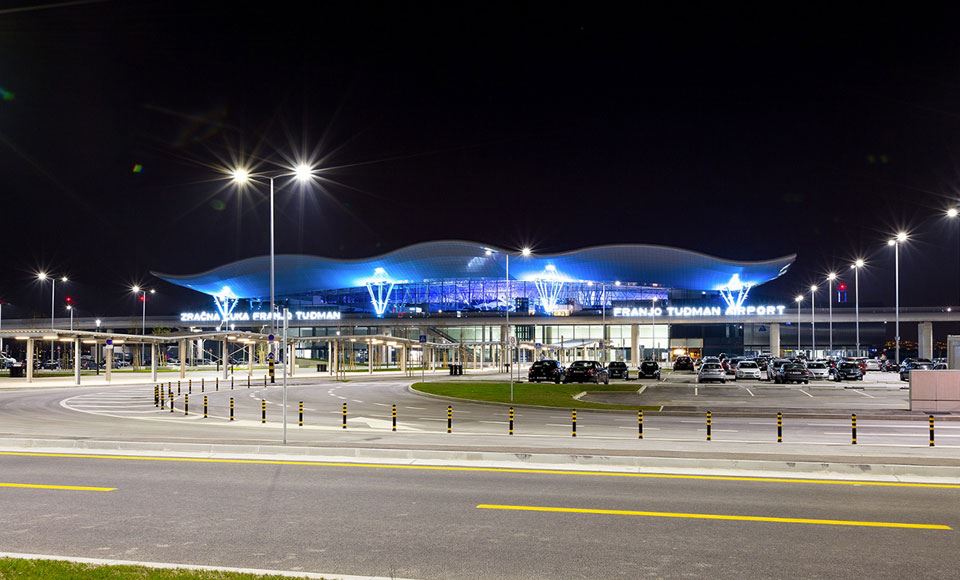
Source: Franjo Tuđman Zagreb Airport
With 924,823 passengers throughout the year, the main Croatian airport Franjo Tuđman Zagreb failed to reach the millionth passenger in 2020. However, almost half of the total Croatian traffic in 2020 was realized at the Zagreb airport.
Although it recorded an increase in the number of passengers in January and February compared to the same period in 2019, Franjo Tuđman Airport recorded a decrease in the number of passengers of 73 percent compared to 2019.
Unlike Zagreb Airport, Split Airport in January and February has modest traffic compared to the summer, seasonal months, and so it was in 2020. However, after the global pandemic hit Croatia, air traffic in Split almost stopped.
However, compared to other Croatian airports on the coast, Split still had a certain number of passengers in the peak season, especially in August. Still, the numbers in the post-season dropped drastically again. With 674,366 passengers, Split Airport recorded a decrease in the number of passengers of 79.58 percent compared to 2019.
Dubrovnik Airport was one of the biggest losers last year. It was closed in April, while the traffic was very poor in May and June. An increase in the number of passengers was recorded only in July and August, but not enough to avoid a large drop in the number of passengers.
Although many companies flew to Dubrovnik this summer, the planes were empty rather than full, as confirmed by statistics. The decrease in the number of passengers at Dubrovnik Airport is 88.6 percent compared to 2019.

Source: Zadar Airport
Traffic also dropped drastically at Zadar Airport, but not as much as in Pula. These two Croatian airports have been competing in the number of passengers for several years, and the difference between them is relatively small. Nevertheless, in 2020, Zadar accepted almost 40,000 more passengers than Pula. Zadar Airport recorded a drop in the number of passengers of 84.93 percent compared to 2019, and Pula Airport 89.6 percent.
In 2019, Rijeka Airport finally exceeded 200,000 passengers for the first time in its history. Still, the numbers dropped drastically in 2020 as many airlines have given up on introducing seasonal routes to this airport due to the global pandemic. Rijeka Airport thus recorded a decrease in the number of passengers of 86.22 percent compared to 2019.
In 2020, Osijek Airport had only domestic PSO (Public Service Obligation) lines and the Eurowings line to Stuttgart, but only in August. It recorded a decrease in the number of passengers of 85.72 percent compared to the previous 2019.
Brač Airport also recorded a decline in the number of passengers in 2020. A slightly more significant number of passengers was recorded only in July and August, but these are also modest numbers compared to the 2019 summer season.
You can see the graphs of the 2020 traffic from all Croatian airports at Croatian Aviation.
For the latest travel info, bookmark our main travel info article, which is updated daily.
Read the Croatian Travel Update in your language - now available in 24 languages.
Tomašević: City Administration Should Pay Attention to Safety of Schools
ZAGREB, 11 January, 2021 - The leader of the We Can! platform Tomislav Tomašević said on Monday that the Zagreb City Administration should pay more attention to the safety of schools and kindergartens since classes begin in a week.
A lot of buildings are still not safe for passers-by due to damaged chimneys, parts of the facade, roof tiles and bricks. This need to be cleared up urgently because citizens' safety is at stake, Tomašević told reporters in front of the Ivan Gundulić Primary School.
Over 170 buildings, he said, were damaged in March, and according to City Administration data allegedly only 13 still need to be reconstructed and the reconstruction is under way.
He added that the latest earthquake that hit the Petrinja area increased the damage sustained in March in the centre of the city, in Podsljeme neighbourhoods and in the south in Brezovica.
He said that the safety of schools and kindergartens had to be ensured in three ways.
According to Tomašević, the structural safety of buildings needs to be determined and presented to all parents, safe access to the buildings of schools and kindergartens must be ensured for children and everyone else, and greater safety of children must be ensured in case of new earthquakes, especially through a revision of the existing evacuation plans and protocols.
Asked whether he knew how many houses were destroyed in the Petrinja earthquake that had been reconstructed after the Homeland War, Tomašević said that those had not been isolated cases and that he did not know exactly how many but that the number was not low.
He said that a parliamentary commission of inquiry was needed and that they wanted for the commission to be a joint initiative by the opposition.
"We expect, since the prime minister said he wanted it to be investigated, that the HDZ and the ruling majority support it," Tomašević said.
Teachers Union Calls for Deferment of 2nd Semester for Earthquake County
ZAGREB, 11 January, 2021 - The teachers' union on Monday sent five demands to institutions including a request that second semester in Sisak-Moslavina County be deferred for 2 to 4 weeks and that employees and parents in Zagreb schools be informed in writing of the condition of school buildings.
Teachers have called for 2nd semester in schools in Sisak-Moslavina County to be deferred for 2 to 4 weeks after they had spoken to employees and parents in earthquake stricken areas where many of them were involved in volunteer work to rebuild their own homes and those of others.
The union warned than many students do not have electricity connected and that they need time to recover from the trauma and that they are not ready yet to stick to regular curriculum.
Apart from that many students are currently housed in containers and they need psychological help to adapt to their specific situation and in those circumstances it is impossible for principals to organise regular classes.
The union notes that the relevant ministry has sent a questionnaire asking where students are currently located and whether they have electricity but it has not taken into account their psychological-social condition nor their needs in the field and what students, parents and teachers need the most at the moment.
The union warned that neither students nor teachers are currently in a position to conduct online lessons.
The union also warns that parents in Zagreb demand that safe passage to schools be enabled for students and that rubble from the most recent quakes be removed from streets.
"If it is insisted that school in Zagreb starts according to Model A (face to face), we demand that employees and parents be informed in writing of the condition of school buildings that students are expected to attend on 18 January 2021, and for that to be before the start of school with additional information about what level of earthquake school buildings can withstand," the union said.
The union considers that it is essential to conduct evacuation exercises with students and that rescue protocols need to be updated in other counties that have been affected by the earthquakes because it seems that prevention in Croatia is not organised and regular evacuation exercises are not conducted.
The union also called for an urgent response from the ministry with regards to its demand set at a meeting on 29 December calling for employees in education to be among those priority groups for vaccination against COVID-19.


